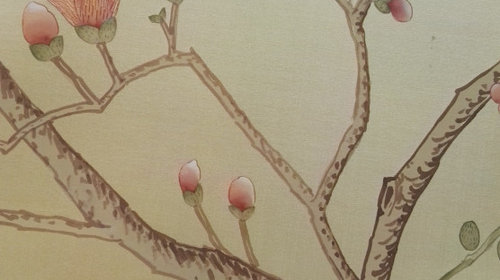Hand painted silk wallpaper
JAMEITE Hand-painted Silk Wallpaper Co., LTD
4 years ago
History of Chinoiserie
The East India companies started trading in the 17th century and by the beginning of the 18th century Europe was fascinated by all things from the orient. European artists started to go to the Orient and paint watercolours and publish books of hand-coloured aquatints, which enabled people to see for the first time the man-made structures as well as the flora and fauna and landscapes of the East. Around 1700 the first wallpapers were bought back from China by the East India Company and soon became known as 'India' papers.
Between then and the early 19th century most of the crowned heads of Europe had created their own Chinese interiors to house the collections of Far Eastern artefacts brought back by the East India Company and other traders and adventurers. Drottningholm, The Brighton Pavilion, Charlottenburg and Oranienbaum are some of the palaces where you can still see these wonderful papers.
we is continuing this tradition of using Chinoiserie that reached its height around 1760 when Thomas Chippendale purchased Chinese wallpapers for the interior of Nostell Priory in the North of England.
Using the same techniques as in the 18th Century, we is uniquely placed to create the highest quality wallpapers, enabling you to create your very own exotic Oriental interior. We are continually adapting and colouring our bird and flower designs to fit all kinds of surroundings.


Houzz uses cookies and similar technologies to personalise my experience, serve me relevant content, and improve Houzz products and services. By clicking ‘Accept’ I agree to this, as further described in the Houzz Cookie Policy. I can reject non-essential cookies by clicking ‘Manage Preferences’.





Related Discussions
POLL: Paint or Wallpaper?
Q
Blank Canvas vs Low Funds!
Q
Stair runner
Q
Go on then what's your latest impulse buy for your home?
Q